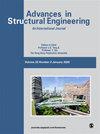Structural analysis and application research for controlled strand length cutting blade of rotary guillotine cutter
IF 2
4区 工程技术
引用次数: 0
Abstract
In the tobacco processing stage leading to the production of cigarettes, there are strict technical requirements for the structure and proportion of different lengths of cut tobacco following the cutting process. Moreover, the lightweight design of the high-speed rotary-cutting blades is of significant importance during this stage. To better address issues related to the rational design of the blade structure in rotary-cutting cutters and the effective control of size proportion of cut tobacco, this paper establishes a CLSC blade design method featuring concave-convex edges and inter-edge grooves, and provides specific structural schemes. By introducing the structure of the cutting components of the cutter and the cutting process, and by analyzing the differences in layout features between RSEC and CLSC blade structures, as well as their relevance to tobacco cutting and shaping, this paper establishes the installation constraints and mechanical load model for cutter blades under rated conditions. Finite element methods were used to model and analyze both types of cutter blade structures, yielding static and modal analysis data. Furthermore, production verification was conducted on an SD EVO cutter, and data on the rate of different lengths of cut tobacco were obtained. The results show that the mass of the CLSC concave-convex edge cutter blade was reduced by 4.33%, and the static stiffness efficiency was increased by 2.37 times. Although the first-six natural frequencies of the CSLC blade showed degradation in modal analysis, it still met the equipment vibration usage condition. The production verification results indicated that the use of CLSC concave-convex edge cutter blades reduced the long cut rate by 2.48%, increased the medium cut rate by 2.29%, broken cut rate increased by 0.08%, and increased the short cut rate by 0.12%, with an overall reduction in the whole cut rate by 0.19%, achieving the objectives of reducing the long cut rate, controlling the whole cut rate, and not increasing the broken cut rate. The CLSC blades were able to operate continuously, stably, and safely on the rotary-cutting cutter machine. The research presented in this paper can provide a reference for the analysis and design of cutter blade structures in tobacco cutter machines.旋转式铡草机控制股长切割刀片的结构分析与应用研究
在生产卷烟的烟草加工阶段,对切割后不同长度烟草的结构和比例有严格的技术要求。此外,在这一阶段,高速旋转切割刀片的轻量化设计也非常重要。为了更好地解决旋切机刀片结构的合理设计和有效控制切割烟丝尺寸比例的相关问题,本文建立了以凹凸刃和刃间沟槽为特征的 CLSC 刀片设计方法,并提供了具体的结构方案。通过介绍切割机切割部件的结构和切割过程,分析 RSEC 和 CLSC 刀片结构布局特点的差异及其与烟叶切割和整形的相关性,本文建立了额定条件下切割机刀片的安装约束和机械载荷模型。本文采用有限元方法对两种类型的切割机刀片结构进行建模和分析,得出了静态和模态分析数据。此外,还在 SD EVO 切割机上进行了生产验证,并获得了不同长度烟草切割率的数据。结果表明,CLSC 凹凸刃切刀的质量降低了 4.33%,静态刚度效率提高了 2.37 倍。虽然在模态分析中,CSLC 刀片的前六个固有频率出现了衰减,但仍满足设备振动使用条件。生产验证结果表明,使用 CLSC 凹凸刃铣刀片后,长切率降低了 2.48%,中切率提高了 2.29%,断切率提高了 0.08%,短切率提高了 0.12%,整切率总体降低了 0.19%,达到了降低长切率、控制整切率、不提高断切率的目的。CLSC 刀片能够在旋切切割机上连续、稳定、安全地运行。本文的研究可为烟草切割机刀片结构的分析和设计提供参考。
本文章由计算机程序翻译,如有差异,请以英文原文为准。
求助全文
约1分钟内获得全文
求助全文
来源期刊

Advances in Mechanical Engineering
Engineering-Mechanical Engineering
自引率
4.80%
发文量
353
期刊介绍:
Advances in Mechanical Engineering (AIME) is a JCR Ranked, peer-reviewed, open access journal which publishes a wide range of original research and review articles. The journal Editorial Board welcomes manuscripts in both fundamental and applied research areas, and encourages submissions which contribute novel and innovative insights to the field of mechanical engineering
 求助内容:
求助内容: 应助结果提醒方式:
应助结果提醒方式:


